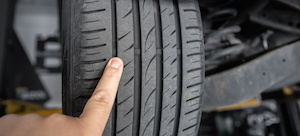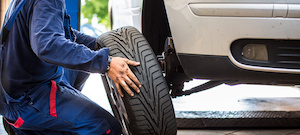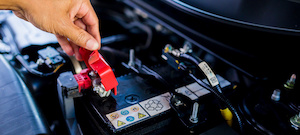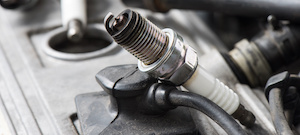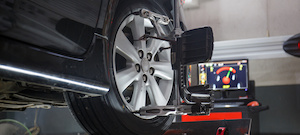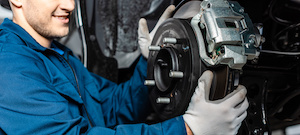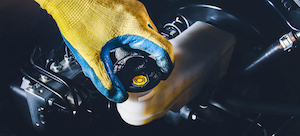The Ultimate Car Maintenance Checklist
Sept. 8, 2022
Sept. 8, 2022
Car maintenance involves understanding many mechanical parts, booking garage appointments and conducting regular at-home checks. Many tasks related to the health of your vehicle can quickly add up. Here’s a checklist of tasks you must complete to keep your car in good condition.
These little inspections and appointment reminders will go a long way in helping you stay on track with your vehicle’s maintenance and avoid numerous trips to the garage!
Engine Oil
Engine oil lubricates various parts in the engine, as well as those around the engine so they don’t rub together and become damaged prematurely. Engine oil also limits energy loss and acts as a cleaning agent to fight rust.
To find out when it’s time to change your engine oil, consult your vehicle’s owner’s manual. Your mechanic can also inform you when to come in for your next oil change. Most mechanics put a sticker on your window indicating the mileage that must be reached before a new oil change is in order.
Coolant
Coolant keeps the engine at an ideal temperature and prevents it from overheating. It’s also called “antifreeze” because most coolants don’t freeze when the thermometer dips below 0°C.
That’s why it’s important to check that the tank or radiator is filled to the brim. If there isn’t enough liquid, add more to fill line.
It’s best to ask a professional to check and drain the coolant since it’s toxic, polluting and can irritate the skin. It also must be disposed of at a special facility designed for this purpose.
Oil changes should be done approximately every 50,000 kilometres, every 2 to 4 years or every 2 to 5 years, depending on how much you drive your vehicle. The coolant level should be checked every year.
Windshield Washer Fluid
Make sure your window washer fluid tank is full or topped up before you hit the road, especially when going on a long drive or venturing on dirty roads. Another tip is to always carry a bottle of windshield washer fluid in your trunk, so you aren’t caught off-guard if the tank unexpectedly runs out.
Tire Pressure
Checking your tire pressure is a top priority. Poor tire pressure can lead to blowouts, rapid deterioration and high fuel bills. Much of the deterioration is due to cold temperatures.
In fact, when the temperature drops by 6°C, your tires can lose 1 PSI of pressure. Be extra careful when the cold seasons hits, but also be vigilant every month. Pay special attention to the tire pressure before you hit the road on a long trip.
The maximum tire pressure should be between 30 and 35 PSI, or between 32 and 35, for some vehicles. The important thing is to follow the recommendations of your car manufacturer. The maximum pressure is usually indicated inside the door of your car or in the owner’s manual.
Tire Tread
The term tire tread is used to refer to the surface of the tire that touches the road and ground. Excessive tread wear can affect your driving and safety. Here are the main causes of tire tread wear:
- Incorrect inflation. Tire pressure that’s too high or too low can result in premature tire wear, a blowout or even a flat tire.
- Improper alignment. If the tires and wheels aren’t properly aligned, chances are the tires will pay the price, including the treads.
You can use a depth gauge to check the tread depth yourself. You can also rely on the indicator bars located at 1.6 millimetres (2/32 inches) in the tire. If you see the bars or they’re flush with the tread, it’s best to change your tires.
Tire Rotation
Although often overlooked, tire rotation plays a crucial role in the longevity of your tires. It involves rotating the tires on your car. Some tires wear down faster when they’re on the front. Therefore, they’ll get a break when they’re on the back.
Alternate tires between sides and from front to back. Ideally, a rotation should be done every 10,000 kilometres or so.
Tire Change
You may need to change your car’s tires during the year due to wear and tear or the season. In fact, depending on the legislation in your province, you may have to make an appointment to fit your car with winter or summer tires.
This is one more item to add to your maintenance checklist!
Car Battery
Who hasn’t experienced a situation where their battery is dead because the temperature outside is freezing or because they forgot to turn off the interior lights?
These situations, although annoying, allow us to realize the importance of a functional battery. No battery = no running car. That’s why it’s important to take care of the battery and check it regularly to detect any abnormalities that could cause a lot of trouble.
- Look for rust on the battery, terminals and metal components
- Check for cracks or water on the battery box
- Check for any disconnected or broken cables, as well as any bolts that may be loose
Testing your car’s battery is a good way to find out how much wear and tear it has. You should also know that a battery has a lifespan of about 5 years.
Tip: carrying jumper cables in your car at all times makes it easier to restart the battery in the event of a breakdown.
Spark Plugs
These play a vital role in gas-powered cars (spark-ignition engines). They create a spark that starts the car. Therefore, it goes without saying that your car’s spark plugs must be efficient.
To give you an idea of when to change them, or when they may fail on you, you should know that spark plugs have a very variable lifespan: anywhere from 50,000 to 80,000 kilometres. However, we recommend having them checked every 25,000 to 30,000 kilometres to avoid any unpleasant surprises.
Wheel Alignment
Wheel alignment refers to the action of positioning the wheels so they directly grip the ground and road, and are parallel to each other so the vehicle drives straight.
It’s recommended that you take your car to a professional mechanic as this is a complex task that requires many tools and a specialized facility.
You can ask your mechanic to perform a wheel alignment about once a year or once you’ve driven 20,000 kilometres since the last alignment.
Car Headlights
The condition of your car’s headlights and taillights should never be overlooked when you hit the road. Even in the middle of the day, when the sun is at its peak, your lights must work properly; even if only to signal that you’re braking or making a turn.
When it gets dark outside, the low beams and taillights should turn on automatically.
You can verify that your headlights are still in good working order by doing regular checks, especially if you changed the bulbs a long time ago. In some newer cars, an icon appears on the dashboard to indicate that a headlight is out.
Every type of bulb is different, so the lifespan of your lights can vary. You can rely on the brand of your bulbs and the time of installation to know when to replace them.
Brakes
On the road, you want to get from point A to point B in a reasonable amount of time, but you also want to be able to brake when necessary. Don’t neglect brake maintenance! Make sure you change them when it’s time to do so.
There may be warning signs that your brakes are wearing out, such as abnormal sounds when you drive or press the pedal. Listen for these noises, as they can be a good indication that a garage appointment is in order.
When you visit the garage for an oil change, ask the mechanic to check your brakes and the level and condition of the brake fluid. You’re also encouraged to pay special attention to any hard braking when you’re on the road. For example:
- If you have to push harder on the pedal to slow down
- If you feel unusual vibrations when you brake
- If you notice the pedal locking up while braking
Brake Fluid
Brake fluid, which flows through the hoses, is where the braking force is transmitted to the wheels. You can identify the brake fluid reservoir by its cap, which is usually black and has yellow pictograms. This is where you can check the level.
If the liquid reaches the hose line, it’s filled to the top. If it doesn’t, it means you need to top it off. Note that low levels may mean a trip to the garage is in order since the brake pads could be damaged.
You should change the brake fluid every 2 years or every 10,000 kilometres. It’s best to ask a specialist since some types of brakes require more steps when changing the fluid. In addition, it’s a toxic fluid that should never be exposed to the skin.
With all these definitions of parts and regular maintenance, where will you start? By sticking the list on the fridge or visit your favourite garage?









